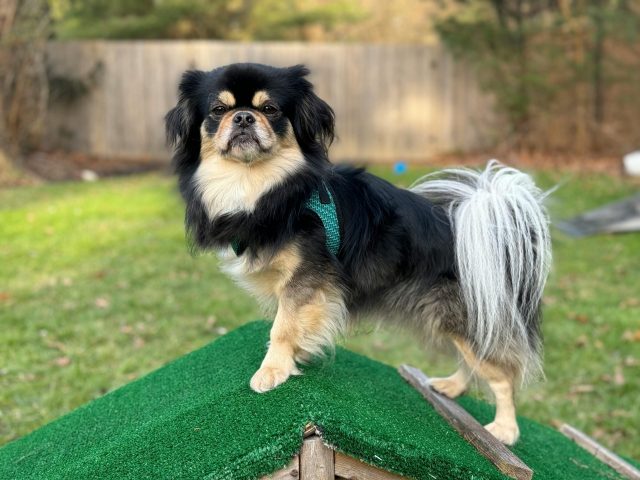Dogs are known for their loyalty, companionship, and unconditional love. As pet owners, we strive to give them the best care and affection. However, there are times when our well-intentioned actions might be irritating to our furry friends, even if we don’t realize it. Understanding the subtle signs of canine annoyance can help us foster a more harmonious relationship with our pets. This article explores twelve common ways you might be irritating your dog without even knowing it. From overly affectionate behavior to neglecting their needs, these insights will help you adjust your actions to keep your dog happy and content. By being mindful of these habits, you can ensure that your bond with your dog remains strong and positive.

1. Hugging Too Tightly
While some dogs tolerate hugs, many find being tightly held uncomfortable and restricting. Dogs have different ways of showing affection, and a tight hug can make them feel trapped. Instead, try to understand your dog’s preferred way of receiving affection, whether it’s gentle petting, belly rubs, or simply sitting close by. Respecting their personal space is crucial to maintaining their comfort and trust.
2. Inconsistent Rules
Dogs thrive on consistency and clear boundaries. When rules change frequently or are inconsistently enforced, it can confuse and frustrate your dog. For example, allowing your dog on the couch one day and scolding them for it the next can lead to anxiety and behavioral issues. Establishing and sticking to a consistent set of rules helps your dog understand what is expected of them and reduces their stress.
3. Loud Noises
Dogs have a heightened sense of hearing and can be easily startled or stressed by loud noises. Yelling, loud music, or household appliances like vacuum cleaners can cause significant distress. Try to create a calm and quiet environment for your dog, especially during loud activities. If you must use loud equipment, consider moving your dog to a quieter area of the house during that time.
4. Not Enough Exercise
Dogs need regular physical activity to stay healthy and happy. Lack of exercise can lead to boredom, anxiety, and destructive behavior. Ensure your dog gets enough daily exercise based on their breed, age, and health. Regular walks, playtime, and mental stimulation through interactive toys or training can help keep your dog physically and mentally fit.
5. Overfeeding
While it may seem like a way to show love, overfeeding your dog can lead to obesity and health problems. Dogs need a balanced diet appropriate for their size, age, and activity level. Overindulging them with treats and table scraps can cause weight gain and nutritional imbalances. Consult your veterinarian for dietary recommendations and stick to a feeding schedule to maintain your dog’s optimal health.
6. Ignoring Their Body Language
Dogs communicate primarily through body language. Ignoring signs of discomfort, fear, or stress can exacerbate these feelings and strain your relationship. Learn to recognize common signs of canine stress, such as yawning, lip licking, cowering, or tail tucking. Responding appropriately to these signals shows your dog that you understand and respect their needs.
7. Lack of Mental Stimulation
Dogs need mental stimulation to prevent boredom and related behavioral issues. Providing your dog with toys, puzzles, and training exercises can keep their mind engaged and happy. Interactive games, obedience training, and new experiences can stimulate their brain and improve their overall well-being.
8. Neglecting Grooming
Regular grooming is essential for your dog’s health and comfort. Neglecting tasks like brushing, bathing, nail trimming, and dental care can lead to discomfort and health problems. Develop a grooming routine that suits your dog’s coat type and needs. This not only keeps them looking their best but also prevents issues like matting, infections, and dental disease.
9. Forced Social Interactions
Not all dogs are comfortable around strangers or other animals. Forcing your dog into social situations where they feel threatened or uncomfortable can cause anxiety and stress. Pay attention to your dog’s social preferences and respect their boundaries. Gradual and positive introductions can help your dog feel more at ease in social settings over time.
10. Leaving Them Alone for Too Long
Dogs are social animals and can experience separation anxiety when left alone for extended periods. Prolonged isolation can lead to destructive behavior and emotional distress. If you need to be away from home for long periods, consider hiring a pet sitter, taking your dog to daycare, or arranging for a friend or family member to check in on them. Providing toys and comfort items can also help alleviate their anxiety.
11. Overtraining
While training is important for a well-behaved dog, overtraining can lead to frustration and burnout. Dogs need time to relax and be themselves. Balance training sessions with playtime and relaxation to keep your dog motivated and happy. Short, positive training sessions are more effective than long, repetitive drills.
12. Using Harsh Discipline
Using harsh discipline methods, such as yelling, hitting, or using aversive tools, can damage your dog’s trust and relationship with you. Positive reinforcement techniques, such as treats, praise, and rewards, are more effective and humane ways to train your dog. Building a foundation of trust and respect will lead to a happier and more well-behaved pet.

Recognizing these common ways, you might be irritating your dog without realizing it can help you adjust your behavior to meet their needs better. By understanding and respecting your dog’s unique preferences and requirements, you can foster a deeper bond and ensure their happiness and well-being. The relationship between you and your dog should be built on trust, love, and mutual understanding, leading to a harmonious and fulfilling companionship.
 Toledo, United States.
Toledo, United States.